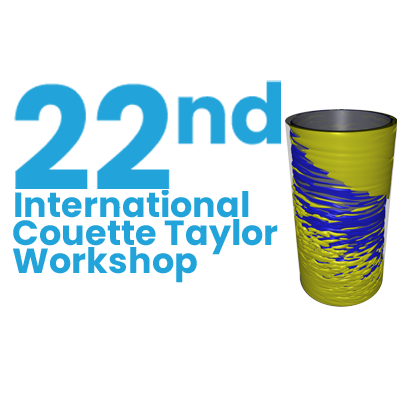
The effect of curvature and centrifugal forces on the transition in pipe flow
Please login to view abstract download link
Being aware of the many unsuccessful attempts to detect linear instabilities for simple shear flows such as pipe, channel and planar Couette flow, \cite{Taylor} instead picked a curved version of the latter geometry, the flow between concentric rotating cylinders. In his landmark paper he demonstrated that by adding curvature to the Couette problem a linear instability arises and he moreover found excellent agreement between the theoretical prediction and experiments. In a subsequent study \cite{Taylor2} investigated curved rather than straight pipes and confirmed an earlier finding that in this case curvature delays the transition. Subsequent studies found that analogous to Couette flow, also in sufficiently curved pipes a supercritical instability arises. In this case a Hopf bifurcation occurs at Reynolds numbers significantly larger than those where instability is encountered in straight pipes. As shown in Figure \ref{fig:nice_plot} (figure adapted from \cite{Kuehnen}) depending on curvature the instability can hence be either sub- or supercritical. In the present talk we will show that unexpectedly in between these two cases, i.e. for intermediate curvature, yet another scenario is encountered. Here, rather than puffs, larger connected regions of turbulence are found. Instead of the familiar continuous transition that occurs in straight pipes, for this intermediate curvature case the transition tends towards a discontinuous case in the infinite pipe limit.

